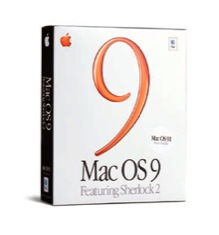Apple introduced Mac OS 9, the last edition of the “classic” Mac OS line, in 1999 and buried it less than three years after in May 2002, at its WWDC (WorldWide Developer Conference).
During the WWDC keynote, Steve Jobs officiated a mock ceremony where he actually buried a giant box of Mac OS 9 in a coffin after a humorous and a bit irreverent funeral oration, complete with organ accompaniment.
And yet, despite its official sendoff, the “old” OS has refused to rest “in the great bit bucket in the sky” where the iCEO so hastily put it.
Mac OS 9 has not only been the main OS for quite a few years during the early and immature phase of Mac OS X’s existence, but there are users stubbornly and happily using it right now, in 2014. They are still making the most of it on supported Macs and some have even successfully hacked unsupported models harnessing all of the power of the PowerPC chips.
You see, at the time of Mac OS 9’s “death” Apple not only put all of its resources behind the newer OS, but also made it impossible to natively run the OS on its new Macintoshes, relegating it to the emulated Classic environment. Starting from 2003 Apple introduced new Mac which could only boot in Mac OS X. In 2004 this forced “transition” was a reality, also thanks to the fourth major release of OS X, Panther, which cut support for older Macs such as beige G3s and the “Wall Street” PowerBook G3s.
 Although more and more outdated, Mac OS 9 has soldiered on and still lives. There is a pletora of quality professional software available and its great responsiveness and pixel-perfect interface have a small but devoted user base. There are not luddites, but old and new users who simply want to use the pinnacle of the “Classic” Macintosh OS on hardware that just refuses to die. It’s a combination which, though undoubtedly old and practically worthless (or very cheap, if you like), is still quite powerful and productive.
Although more and more outdated, Mac OS 9 has soldiered on and still lives. There is a pletora of quality professional software available and its great responsiveness and pixel-perfect interface have a small but devoted user base. There are not luddites, but old and new users who simply want to use the pinnacle of the “Classic” Macintosh OS on hardware that just refuses to die. It’s a combination which, though undoubtedly old and practically worthless (or very cheap, if you like), is still quite powerful and productive.
Sure, going online with a G3 or even <1 GHz G4 is a frustrating (and risky) experience* but there's a lot that a “Classic Setup” can attain. It’s not only good for text editing but also for professional graphics work and audio production.
[Mac] OS X is a great leap forward and has been one of the keys in the resurgence and success of Apple and of the “computer for the rest of us”, but 15 years ago, when Mac OS 9 was released, the Mac was already an established and mature platform.
Let’s not forget that.
* in the browser department, iCab and Classilla are the way to go, and TenFourfox is just a reboot away into the 10.4 partition.

Michael David Mullett
I use Mac OS 9.2.2 every day I find it much more responsive and much easier to use, and all the software is free I can load it up for nothing and be on My way working and creating with hardly a glitch in sight, Mac OS X PPC is much harder to get on the web with than OS 9 I use Classilla 9.3.3 to do this and it renders all on the web 10 times better than the newer yet inadequate Browsers for OS X, Tiger is Horrible to connect and Brows and Leopard is not much better But Intel Leopard has The Sunrise 2 Browser and Snow Leopard is way better and very much up to date with whats available for them including an update to the Safari WebKit that allows Browsing of Youtube On the PowerPC platform as well as The Older Intels almost like on newer Computers, I have Never Been a Fan of the Switch to Intel and would have Much Better Liked Apple to have made Their own Processors!